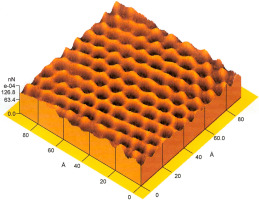Top 5 Types of Batteries Used in EVs
(2023年03月17日)https://www.datamica.com/products/mica-tape
Batteries and the range are two things most people ask about whenever they hear about a new electric vehicle. Even with advances in battery technology leading to faster charging and increased power density, range anxiety is still a concern among potential EV owners.
Over the years, many different types of batteries have been developed and used in electric vehicles, and many more are under development. Along with more widespread charger infrastructure, the goal is to ease range anxiety among customers with faster charging capabilities and improved range among EVs.
In this article, we explore the top 5 types of batteries used in EVs.
1.Lithium-ion batteries
Lithium-ion batteries are the most common type of battery used in EVs and even in other devices like smartphones and laptops. These batteries have a high energy density and can undergo a large number of charge-discharge cycles.
Lithium-ion batteries use an intercalated lithium compound as the positive electrode and graphite as the negative electrode. During discharge, lithium ions move from the negative electrode to the positive electrode and the other way around when being charged.
There are many types of lithium ion batteries, each with different elements along with lithium ions.
NCM batteries use nickel, cobalt, and aluminum on the cathode along with lithium on the anode. Depending on the manufacturer, the ratio of these elements can vary. LFP is another common type of lithium-ion battery and uses lithium, iron, and phosphate. They’re used in Tesla Model 3 and Model Y. NCA (Nickel, Cobalt, Aluminum) batteries and sodium-ion batteries are the other type types of lithium-ion batteries.
2.Lead-acid batteries
Lead-acid batteries were one of the earliest types to be used in automobiles. They’re still commonly used in both EVs and fossil fuel vehicles, but their use is limited to powering the electrical circuit and rarely as the energy source for the drive train (They’re used to power the starter motor in ICEs).
Lead acids batteries are heavy and don’t have the energy density of lithium-ion batteries. But they’re relatively inexpensive and much easier to recycle compared to lithium-ion batteries. They also have a huge power density and can supply high current levels.
Various designs of lead-acid batteries have been developed over the year for specific applications.
3.Nickel cadmium batteries
Nickel-cadmium batteries were popular for EVs in the 90s and present significant advantages over other batteries. They can be stored in a deep discharge state for long durations without any damage and compared to lead-acid batteries, they last much longer. They’re commonly used in power tools and small portable electronics.
But nickel-cadmium batteries also suffer from the memory effect, where their capacity declines when partially charge-discharge cycles. They’re also not used anymore in commercially produced EVs due to the toxicity of cadmium.
4.Nickel metal hydride batteries
Nickel metal hydride batteries have higher energy densities than nickel-cadmium batteries. The battery uses potassium hydroxide electrolyte and an anode of hydrogen-absorbing alloy as its anode. Nickel hydroxide is used as its positive electrode. They’re generally considered safer and degrade slower than li-ion batteries.
They’re a popular option among hybrid EVs but don’t have the energy density for use in fully electric vehicles. They also suffer from the memory effect.
5.Ultracapacitors or supercapacitors
They’re not the most popular type of batteries and are more or less under research and development. These vehicles use supercapacitors to hold charge electrostatically and not chemically.
The drawback with these energy units is that their energy density is low compared to other batteries. But they can be charged and discharged at high rates so they can potentially be used in public transport.
With advances in supercapacitor technology, they may very well be employed in consumer vehicles as well. Lamborghini Sian will be using a supercapacitor to power its electric motor. The idea is that the supercapacitor will store energy every time the vehicle brakes and can then use this energy to prevent gaps in acceleration as the transmission shifts gears.
As one of the mica tape manufacturers, we provide mica tape, mica tape roll, mica laminate sheet, etc. For more information about mica products manufacturing, please feel free to contact us!
- このできごとのURL:



コメント